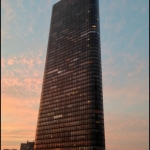A Guide to Smoke-Free Housing
December 1, 2016
By Kristina Hamilton — If someone smokes in your property, you know how serious the damage can be: burned carpet, stained walls, and the residual smell. Secondhand smoke is hard on your investment, so imagine what it does to your residents.
In a multi-unit building, 35 to 65 percent of the air in any given unit is shared from other units and common areas. That means if just one resident smokes, all other residents in that building share the consequences, including an increased risk of heart attacks, stroke and lung cancer. Children exposed to secondhand smoke will have an increased risk of asthma attacks, infections, and SIDS (crib death).
You can protect your residents’ health and your investment by making your properties smoke-free. Going smoke-free doesn’t mean that you don’t accept residents who smoke. Simply put, a smoke-free building is one in which smoking is not permitted indoors, including in any units or common areas. Adopting a smoke-free policy is legal, profitable and easy.
Smoke-free policies are legal.
Just like your policies regarding noise and pets, you can enact policies to prohibit smoking to create a better, safer living environment for your residents. In fact, the U.S. Department of Housing and Urban Development is in the process of transitioning all of its properties to smoke-free and strongly encourages private property owners and managers to do the same.
Smoke-free policies are profitable.
Compared with a unit where smoking is allowed, smoke-free units can cost two to six times less to turn over. In addition, a poll commissioned by Cook County Department of Public Health found that more than two-thirds of suburban Cook County renters would be more likely to rent in a smoke-free building than a building that permitted smoking in units. One out of five renters even said they would be willing to pay more to live in smoke-free housing.
Smoke-free policies are easy.
Developing and implementing a smoke-free policy takes minimal effort and produces maximum results for you and your residents. Once implemented, smoke-free policies are generally self-enforcing and require little staff time. The website www.healthyhotspot.org offers a step-by-step guide to implementing smoke-free housing for rental properties. Community associations who wish to become smoke-free would require a bylaws update.
Led by Cook County Department of Public Health, Healthy HotSpot works with property owners and managers, public housing agencies, private developers and community organizations to transition properties to smoke-free. It provides free assistance, including help with sample lease language, resident surveys, smoke-free signage, smoking cessation resources and fact sheets.
For more information, visit www.healthyhotspot.org or contact Aesha Binion at the Cook County Department of Public Health: abinion@cookcountyhhs.org or 708-633-8342. Property owners/managers outside of Cook County may find resources on the ALA’s website: www.lung.org/local-content/lllinois
This story is reprinted with permission from a flier entitled, Protecting Residents and Their Investment – A Guide to Smoke-Free Housing. Ms. Hamilton is Senior Manager, Tobacco Control, American Lung Association, Chicago, IL.







